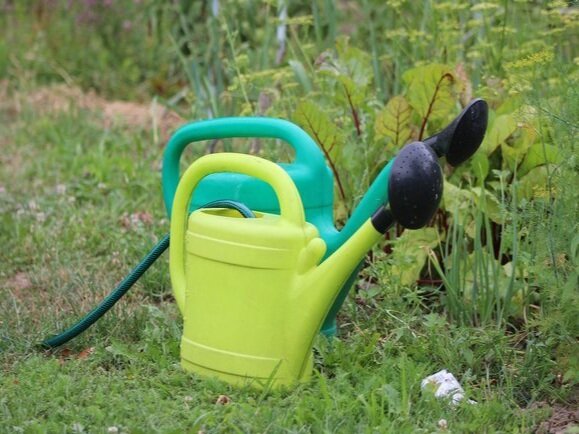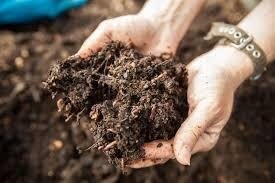Water Conservation: Why Is It Important and What Can You Do?
Heat, drought, beating sun -- I think that well describes the past few summers here in the Seacoast area of New Hampshire and southern Maine. We as humans can go inside, hydrate ourselves, and find shade. Plants don’t have that luxury. We expect them to do well wherever we plant them. Poor things!
I think we have all noticed increasing drought events. Not only have they increased in frequency, but in duration as well. What can you do about it in your neck of the woods? That’s where we come in! Read through this blog for everything you as homeowners need to know about water conservation and contact us for ways we can help.
Time For Some Real Talk About Lawn Size
There are many ways homeowners can be water-wise. Most of the ways to conserve involve planning ahead of time. All is not lost! Let’s first start with plant choices. Actually, let’s back up and talk about lawns or better yet, lawn size. It’s no secret that the bigger the lawn, the more water it is going to take to keep green. We have enough brown/white landscaped lawns from November to May, right? Our expectations as Americans, however, is that lawns must be lush and green all the time. So, one option would be to accept a different philosophy on what you expect.
A different approach might be to reduce the size of your lawn. Most people in the Seacoast area are on town water. Many towns restricted water usage and weren’t allowed to water their lawns. That’s a bit of a bummer when you have a wonderful irrigation system. Other homeowners were hit with HUGE water bills from trying to keep their lawns green. Some of those people opted to water at night so the water doesn’t evaporate so quickly allowing the lawns and plants a chance to uptake water.
Plant Choices Are Key!
OK, that’s enough about lawns! Let’s talk about other plants. Whether you are picking out plants at your local greenhouse or garden center (Wentworth Greenhouses, Rolling Green Nursery, and Churchill’s are wonderful locally owned businesses) or you are having your landscape project designed by professionals (I’ve heard Site Structures Landscape is the natural choice!), it is important to select plants with low water needs. Even if you have irrigation, during a drought it is hard for your system to keep up, especially if you have a new planting.
Consider These Plants With Low Water Needs
Sedum
Hosta
Black-eyed Susan
Some easy to maintain perennials with low water needs include yarrow, daylilies, beard tongue, creeping phlox, catmint, daisy, echinacea, astilbe, black-eyed susans, sedum, hostas, and some ferns. Some shrubs to consider would be spirea, potentilla, and rhododendron (really any evergreen shrub). Some trees to contemplate for water conservation would be crabapple (spring snow doesn’t fruit so less mess in the fall), stewartia, London plane tree, and most evergreens (they lose water more slowly than deciduous plants so they don’t need as much water). These are just a few suggestions to get started with brainstorming.
Timing Is Everything: When Should You Water?
As we mentioned with regard to lawn irrigation, the timing of your watering can conserve water as well. The best time to water in normal conditions is around 10 a.m. in the morning so the sun has a chance to dry any leaves (if you have overhead watering) as to discourage foliar diseases. However, in a drought and extreme heat, the moisture will last longer if you set the irrigation to go off in the evening. You may need to water more often for smaller periods of time, this also helps conserve water.
Pick a Mulch, Any Mulch
Mulching is important if you have bare space between your plants. If your plants grow together or create a groundcover (or what’s otherwise called a living mulch) this acts as a mulch which helps conserve water, and suppresses weed seed germination as well. Win-win! Mulches can be mulched leaves, salt marsh hay, bark mulch, pine needles, or living mulch.
Bark Mulch
Pine Needle Mulch
Living Green Mulch
What About Container Plants?
Of course, not everyone has a big yard to work with. Many people have planters in addition to garden beds. For container plantings, there are self-watering pots you can buy or watering bulbs to fill and stick in the soil. There are antidesiccants you can spray on the upper and lower surfaces of the leaves. There are also soil amendments (soil moist is a good brand) that help maintain soil moisture between watering. Adding more organic matter such as compost will help your soil retain moisture. Making your own compost is ideal, but there are plenty of companies producing it by the bag. Coast of Maine has a great lobster shell blend we like.
What Are the Best Irrigation Systems?
We mentioned irrigation systems, but if you want one, what type should you get? The best systems use drip irrigation. Overhead irrigation wastes a lot of water and encourages foliar disease. It is also important to set your system with a rain sensor so it doesn’t water when we do finally get rain.
Take the Next Steps
If you’re ready to be more water-wise with your property, we’re ready to help! Let’s work together to pick out and plant beautiful flowers or shrubs with low water needs. We can also help install the right irrigation system. And don’t forget to scroll down to our April 2021 blog for details on installing low-maintenance wildflower gardens, which can help conserve water as well.
Well, that covers a lot of ground! Short of doing a rain dance, let’s all keep these concepts in mind this coming year, and hopefully you found a tip to use to help your budget, plant health, and sanity!
Until next time,
Leigh Lessard, Director of Landscape Maintenance, and the Site Structures Crew
To schedule a consultation on water conservation at your property, please email Leigh Lessard at leigh@sitestructureslandscape.com or call Site Structures at (207) 438-9995.












